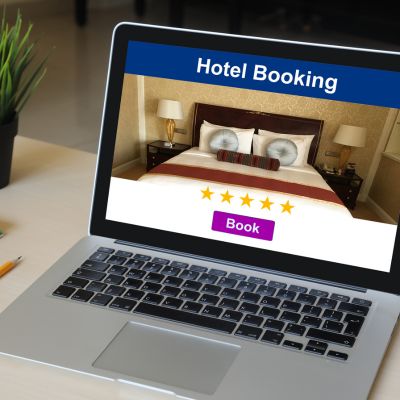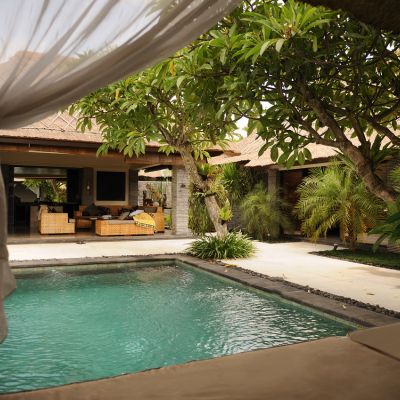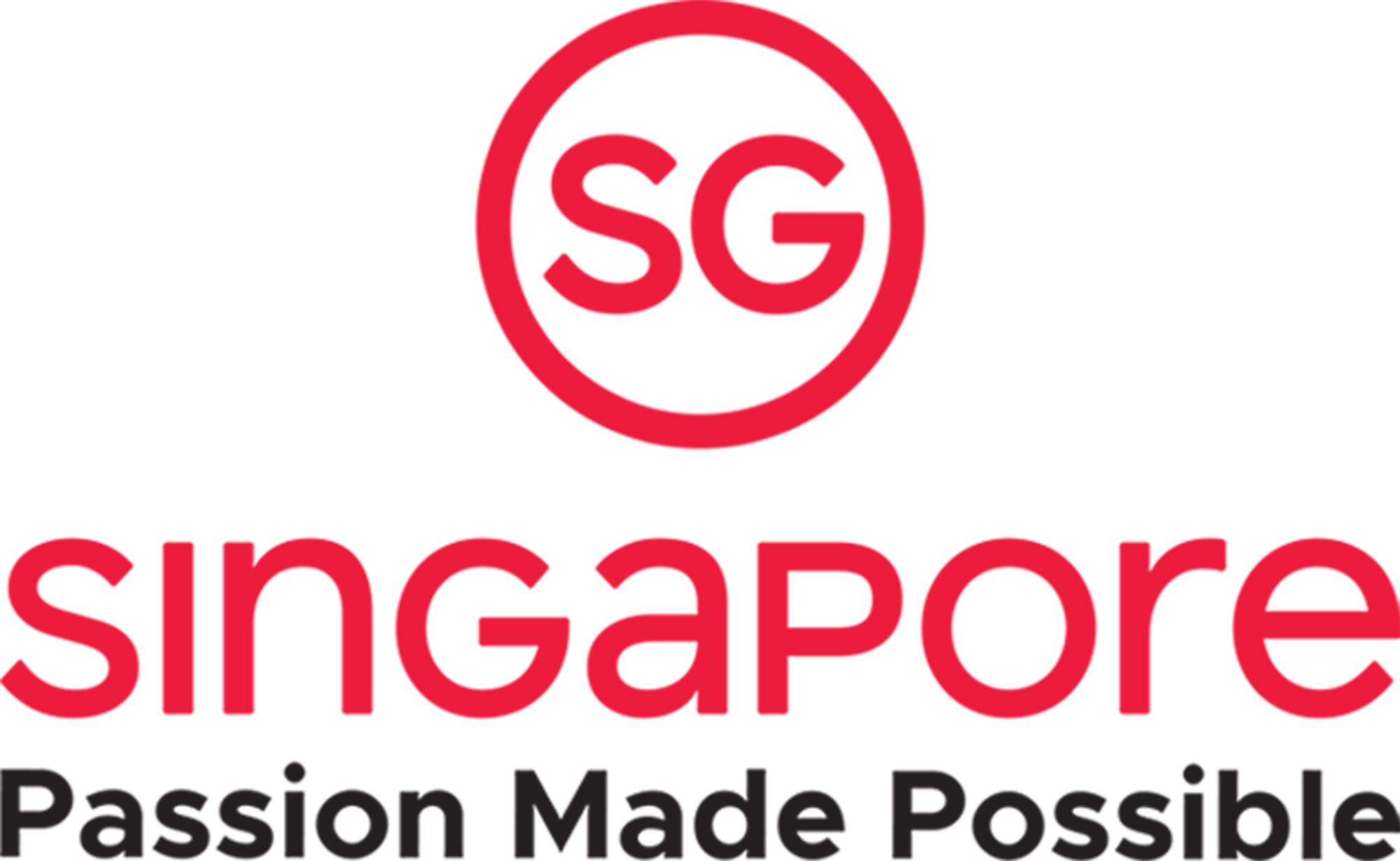Imagine you’re running a hotel and want to know how well it’s performing. One of the most important metrics to look at is the occupancy rate.
This figure tells you what percentage of your rooms are occupied at any given time and is critical for understanding and improving hotel performance.
The occupancy rate is vital because it directly impacts a hotel’s revenue and profitability. For instance, hotels with occupancy rates above 80% tend to see significantly higher profits than those with lower rates.
According to STR, an increase in occupancy rate by just 1% can boost a hotel’s revenue by up to 2%. This blog aims to explain the occupancy rate, how it is calculated, and why it is so crucial for hotels.
Understanding this metric can help hotel managers make more intelligent decisions to enhance their operations and boost revenue.
What is the Occupancy Rate?
Occupancy rate is a key performance indicator in the hotel industry. It represents the percentage of available rooms that are occupied during a specific period.
It is calculated by dividing the total number of occupied rooms by the total number of available rooms and multiplying by 100. For example, if a hotel has 100 rooms and 75 occupied, the occupancy rate is 75%.
Understanding the occupancy rate is crucial for hotel managers because it directly affects revenue and profitability. A higher hotel occupancy rate means more rooms are filled, increasing income from room sales.
This metric helps hotels gauge their performance, plan for the future, and make informed decisions about pricing and marketing strategy.
Moreover, the occupancy rate influences other critical metrics, such as revenue per available room (RevPAR) and average daily rate (ADR). Maintaining a high occupancy rate can help hotels maximize their revenue and optimize their operations.
By closely monitoring and managing this metric, hotels can ensure they are on track to achieve their financial goals and provide excellent service to their guests.
How to Calculate Occupancy Rate

Occupancy rate is a straightforward yet essential metric for evaluating a hotel’s performance. To calculate it, use the following formula:
Occupancy Rate= (Number of Occupied Rooms / Total Available Rooms) ×100
This formula helps determine the percentage of available rooms occupied over a specific period.
Examples
Example 1: Small Hotel
Let’s consider a small hotel with 50 rooms.
On a given night, 35 rooms are occupied.
Applying the formula:
Occupancy Rate = (35/50)×100=70%
This means that 70% of the rooms in the hotel are occupied.
Example 2: Mid-Sized Hotel
Now, look at a mid-sized hotel with 150 rooms.
During a busy weekend, 120 rooms are occupied.
Using the occupancy rate formula:
Occupancy Rate = (120/150)×100 = 80%
Here, 80% of the hotel’s rooms are filled.
Example 3: Large Hotel
Consider a large hotel with 300 rooms.
On a typical weekday, 210 rooms are occupied.
Calculating the occupancy rate:
Occupancy Rate = (210/300)×100 =70%
In this scenario, 70% of the rooms are occupied.
Example 4: Seasonal Variation
During peak tourist season, a hotel with 200 rooms experiences high demand.
For a week, the hotel consistently sold 190 rooms per night.
The occupancy rate is:
Occupancy Rate= (190/200)×100=95%
This high occupancy rate indicates excellent performance during the peak season.
Example 5: Off-Season
Conversely, during the off-season, the hotel might see a drop in occupancy.
On an average night, only 80 rooms are occupied.
Calculating the off-season occupancy rate:
Occupancy Rate=(80/200)×100
This lower rate shows the impact of seasonal demand fluctuations.
Understanding how to calculate and apply the occupancy rate to different scenarios helps hotel managers and owners make informed decisions.
By regularly monitoring this metric, they can adjust strategies to improve hotel occupancy rates, optimize revenue, and enhance overall hotel performance.
In addition to these examples, tools like a Hotel Property Management System (PMS) can simplify tracking and analyzing occupancy data. These systems can provide real-time insights, helping hoteliers respond quickly to changes in demand and implement effective pricing strategies.
Knowing your hotel’s occupancy can also help identify trends and plan for peak and off-peak periods.
By understanding how to calculate and interpret the occupancy rate, hoteliers can better manage their properties, ensuring a balance between maximizing occupancy and maintaining room rates to achieve optimal revenue.
Factors Affecting Occupancy Rate
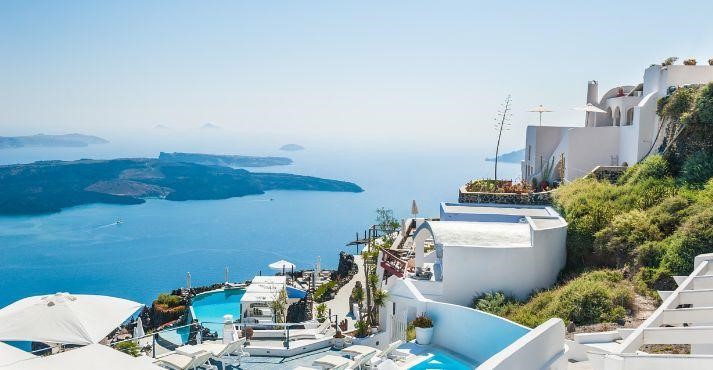
Understanding the factors influencing hotel occupancy rates is crucial for managers aiming to maximize their property’s performance. Several internal and external elements can impact a hotel’s ability to fill rooms, from seasonal trends to marketing strategies.
Here, we will explore some of the most significant factors and provide real-life examples to illustrate their effects.
1. Seasonality
Seasonal trends and holidays play a significant role in hotel occupancy rates. Depending on the time of year, many destinations experience peaks and troughs in demand.
For example, beach resorts often see high occupancy rates during the summer months, while ski resorts are busiest in the winter.
Example: Fontainebleau Miami Beach
The Fontainebleau Miami Beach experiences high occupancy rates of around 90% during winter due to favorable weather and events like Art Basel. However, during the hurricane season, from June to November, occupancy drops to about 50%, prompting the hotel to offer special discounts to attract guests.
2. Location
The location of a hotel significantly influences its occupancy rate. Properties in city centers, near tourist attractions, or near business districts generally experience higher occupancy rates due to increased demand from leisure and business travelers.
Example: Marina Bay Sands, Singapore
Marina Bay Sands, located in the heart of Singapore, benefits from its proximity to iconic attractions like Gardens by the Bay, the Singapore Flyer, and the central business district. This prime location attracts a steady stream of tourists and business travelers, resulting in an average occupancy rate of 85%.
In contrast, a hotel situated on the outskirts of Singapore, away from major attractions and business hubs, might only achieve a 60% occupancy rate due to its less convenient location.
3. Pricing Strategies
Effective hotel pricing strategies are essential for optimizing occupancy rates. Hotels often use dynamic pricing, adjusting room rates based on demand, competition, and other factors. Discounts, promotions, and special packages can also attract more guests.
Example: During a slow season, a hotel may offer a 20% discount on room rates to attract budget-conscious travelers.
This strategy can increase the occupancy rate from 40% to 70%. Additionally, during a high-demand period like a significant local event, the hotel might increase its rates by 30%, maintaining high occupancy while maximizing revenue.
4. Competition
Competition from other hotels and alternative accommodations, such as vacation rentals, can significantly impact a hotel’s occupancy rate. Hotels in highly competitive markets must differentiate themselves through superior service, unique amenities, or competitive pricing.
Example: In a city with numerous accommodation options, a boutique hotel might stand out by offering personalized services and unique room designs.
By marketing these distinct features, the hotel can achieve an occupancy rate of 75% per the occupancy rate formula, compared to the city’s average of 65%. Alternatively, a hotel in a less competitive market might easily maintain a high occupancy rate due to limited options for travelers.
5. Marketing and Advertising
Effective marketing and advertising campaigns attract guests and maintain high occupancy rates. Hotels that invest in targeted marketing efforts, such as online advertising, social media campaigns, and travel agency partnerships, can significantly boost their visibility and appeal.
Example: The Fullerton Hotel Singapore
The Fullerton Hotel Singapore partners with a popular travel website to feature exclusive offers and promotions.
This targeted marketing effort resulted in a 15% increase in bookings, raising the occupancy rate from 70% to 85%. Additionally, engaging social media campaigns showcasing the hotel’s amenities and guest experiences further attract visitors and boost occupancy.
Strategies to Improve Occupancy Rate
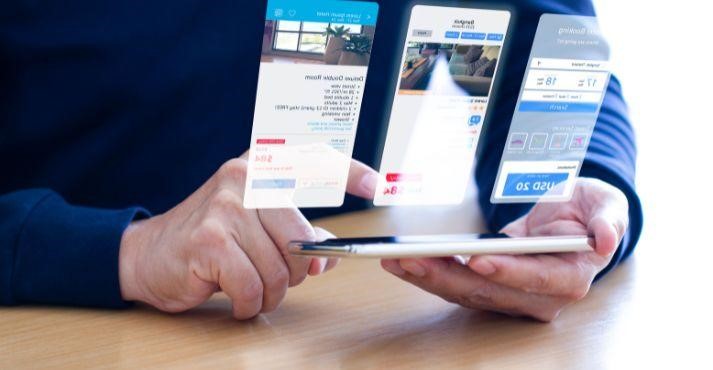
Improving a hotel’s occupancy rate maximizes revenue and ensures the property’s long-term success.
Hoteliers can implement several effective strategies to achieve higher occupancy rates. Here, we will discuss five key strategies: dynamic pricing, loyalty programs, partnerships and collaborations, enhancing the guest experience, and effective marketing.
1. Dynamic Pricing
Dynamic pricing is a powerful strategy for adjusting room rates based on demand. Using sophisticated algorithms and data analysis, hotels can set room prices that reflect current market conditions, competition, and consumer behavior. This approach helps maximize revenue and maintain high hotel occupancy rates.
Example:
A hotel in New York City might use dynamic pricing to adjust room rates during major events like New Year’s Eve. During high-demand periods, the hotel can increase rates to capitalize on the influx of visitors.
Conversely, the hotel can lower rates during slower periods to attract more guests. The hotel can optimize its occupancy rate throughout the year by continuously monitoring and adjusting prices.
2. Loyalty Programs
Loyalty programs are designed to encourage repeat bookings and build customer loyalty. By offering rewards, discounts, and exclusive benefits, hotels can incentivize guests to return, thereby improving occupancy rates.
Example:
A hotel chain offers a loyalty program in which guests earn points for each stay. These points can be redeemed for free nights, upgrades, or special services.
By providing additional perks, such as early check-in, late check-out, and complimentary amenities, the hotel creates a compelling reason for guests to choose their properties over competitors. This strategy boosts repeat bookings and enhances customer satisfaction and brand loyalty.
3. Partnerships and Collaborations
Partnerships with travel agencies, online travel agents (OTAs), and other businesses can significantly boost hotel occupancy rates. These collaborations increase the hotel’s visibility and make it easier for potential guests to find and book rooms.
Example:
A hotel partners with a popular OTA to feature its rooms prominently on the OTA’s website. This collaboration includes special promotions and packages exclusively available through the OTA.
The hotel collaborates with local tour operators to offer bundled packages that include accommodation, tours, and activities. These partnerships expand the hotel’s reach, attract new customers, and increase occupancy.
4. Enhanced Guest Experience
Improving the guest experience is essential for encouraging positive reviews and repeat visits. Guests with memorable and enjoyable stays are more likely to return and recommend the hotel to others, leading to higher occupancy rates.
Example:
A hotel focuses on improving the guest experience by investing in staff training, upgrading facilities, and offering personalized services. This includes welcoming guests with a complimentary drink, providing customized recommendations for local attractions, and ensuring rooms are impeccably clean and comfortable.
By going above and beyond to exceed guest expectations, the hotel can advance positive reviews and word-of-mouth referrals, driving higher occupancy.
5. Effective Marketing
Targeted hotel marketing campaigns are crucial for attracting more guests and improving hotel occupancy rates. Hotels should leverage various marketing channels, including social media, email marketing, and search engine optimization (SEO), to reach their target audience effectively.
Example:
A hotel implements a comprehensive marketing strategy that includes the following elements:
Social Media Campaigns:
The hotel uses platforms like Instagram, Facebook, and Twitter to showcase its amenities, share guest testimonials, and promote special offers. Engaging content, such as behind-the-scenes videos and stunning property photos, helps attract potential guests.
A targeted ad campaign on Facebook focuses on travelers interested in the hotel’s location and services, resulting in increased hotel direct bookings and occupancy.
Email Marketing:
The hotel maintains an email list of past guests and potential customers. Regular newsletters highlight upcoming events, exclusive promotions, and seasonal packages. Personalized emails based on guest preferences and booking history enhance engagement and encourage repeat stays.
Automated emails for abandoned bookings help recover potential lost sales by reminding guests of their intended reservations and offering limited-time discounts.
SEO and Content Marketing:
The hotel invests in SEO to ensure its website ranks high in search engine results for relevant keywords, such as “luxury hotel in Miami” or “family-friendly hotel in Orlando.” High visibility in search results drives more organic traffic to the hotel’s website.
A blog on the hotel’s website features travel tips, local guides, and guest stories, providing valuable content that attracts and engages visitors.
By addressing common travel questions and offering insider knowledge, the blog positions the hotel as a trusted source and encourages bookings, thus increasing the occupancy rate.
Partnerships with Influencers:
Collaborating with travel influencers and bloggers with a large following can boost the hotel’s visibility and credibility. These influencers share their experiences at the hotel on their platforms, reaching a broader audience and generating interest in the property.
Using Advanced Technology
Implementing advanced technology can streamline hotel operations, enhance the guest experience, and improve occupancy rates. Tools like a Hotel Property Management System (PMS), mobile check-in/check-out, and AI-powered chatbots can increase efficiency and guest satisfaction.
Special Offers and Packages
Creating attractive special offers and packages can entice travelers to choose your hotel over competitors, especially during low-demand periods. These offers can include discounts for more extended stays, all-inclusive packages, or themed getaways.
Hosting Events and Conferences
Hosting events, conferences, and meetings can significantly boost hotel occupancy rates, especially during weekdays when leisure travel might be lower. By providing excellent facilities and services for corporate events, hotels can attract business travelers and event organizers.
Frequently Asked Questions (FAQs)
What is the average occupancy rate in the hotel industry?
The average occupancy rate in the hotel industry varies by location and season but typically ranges from 60% to 80%. This metric helps gauge the overall performance and health of the hotel market.
What does a high hotel occupancy rate mean?
A high hotel occupancy rate indicates that a significant percentage of rooms are occupied, reflecting strong demand and effective management. It usually signifies good revenue performance and efficient use of the hotel’s capacity.
What is the average occupancy rate of a 5-star hotel?
The average occupancy rate of a 5-star hotel tends to be lower than other categories, typically ranging from 55% to 75%. These hotels often cater to a more exclusive market, which can result in lower but more profitable occupancy.
Conclusion
Understanding and optimizing the occupancy rate is critical for hotel success. What is the occupancy rate? It is the percentage of available rooms occupied during a specific period.
This key performance indicator influences revenue, profitability, and overall operational efficiency. Hoteliers can improve their occupancy rates and ensure sustained growth by employing strategies like dynamic pricing, loyalty programs, effective marketing, and enhancing guest experiences.
Regularly monitoring and adjusting to market conditions and customer preferences will help hotels stay competitive and achieve long-term success in the ever-evolving hospitality industry.
Focusing on the occupancy rate allows hotel managers to make informed decisions that drive performance and profitability.

